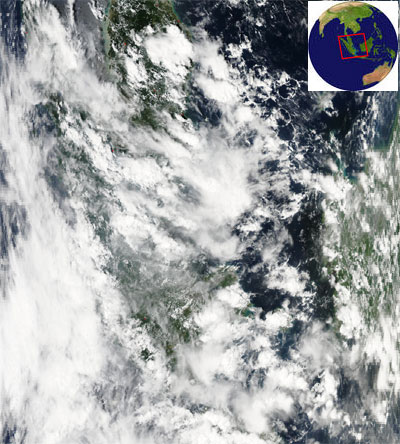Oil palm plantation fires in Sumatra are contributing to air pollution in Singapore, according to Indonesia’s forestry minister.
Indonesian Forestry Minister Zulkilfi Hasan told the Wall Street Journal that fires in concession areas, rather than in forests, is causing the haze that is exacerbating tensions between Indonesia and its neighbors, Singapore and Malaysia. Air quality levels have been near “unhealthy” for much of the past week.
“The government is trying to contain the hot spots within the plantation areas,” Indonesian Forestry Minister Zulkilfi Hasan was quoted as saying.
 NASA MODIS satellite image from Oct 24, 2010 |
Antara, Indonesia’s news agency, reported last week that 200 “hotspots” were detected on Sumatra, mostly in the province of Riau, which has Indonesia’s highest rate of deforestation and greenhouse gas emissions from land use.
The news comes just over a week after environmental ministers from Association of Southeast Asian Nations (ASEAN) countries claimed success in reducing the number fires in recent years under its Agreement on Transboundary Haze Pollution to coordinate fire-fighting efforts. The transboundary agreement was a response to the devastating fires of 1997-1998, when more than 9 million hectares of land burned, spreading a choking haze across Southeast Asia. However Indonesia—where the bulk of burning occurs—has still not ratified the treaty and haze continues to occur on a regular basis, mostly the product of land clearing for timber and oil palm plantations. Much of the burning occurs on peatlands, making fires extremely difficult to distinguish and a particularly large source of carbon emissions and air pollution.
Related articles